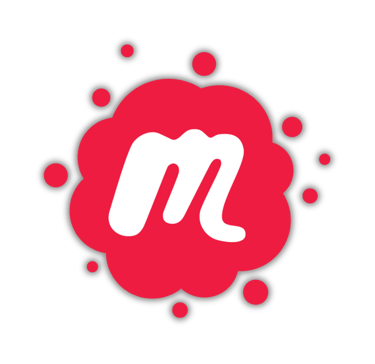Occupational Therapy Strategies for Enhancing Work Performance (Or How to Trick Your Brain into Thinking You're a Productivity Superhero)


Ladies and gentlemen, gather 'round for a tale as old as time: the eternal struggle between you and your to-do list. Picture this: It's Monday morning, your coffee's getting cold, and you're staring at your computer screen with the enthusiasm of a sloth on sedatives. Sound familiar? Fear not, dear worker bees, for today we dive into the magical world of occupational therapy (OT) and its secret weapons for turning you into the productivity powerhouse you've always dreamed of being (cape not included, but highly recommended).
Now, before you roll your eyes and mutter, "Great, another article telling me to do yoga at my desk," hang tight. We're about to embark on a journey that's part science, part life-hack, and part Jedi mind trick. By the end of this, you'll be working smarter, not harder, and maybe even enjoying it. (Okay, let's not get carried away – but at least you'll be better at pretending to enjoy it.)
So, buckle up, buttercup. It's time to OT-ify your work life!
The Art of Environment Manipulation (How to Make Your Workspace Less Soul-Crushing)
First things first: Your environment is either your greatest ally or your worst enemy. Here's how to make it work for you:
a) The Great Declutter:
Remember that pile of papers you've been using as an impromptu coffee coaster for the last six months? It's time for it to go. A cluttered space leads to a cluttered mind, and a cluttered mind leads to... well, scrolling through cat videos instead of working. OT tip: Create designated spaces for everything. And no, "Floor-drobe" is not a designated space for your clothes.
b) The Light Fantastic:
Proper lighting isn't just for Instagram selfies. Poor lighting can lead to eyestrain, headaches, and a general feeling of working in a cave (unless you're Batman, in which case, carry on). Natural light is best, but if your office is more "dungeon" than "sun-drenched loft," invest in some quality full-spectrum lights. Your eyes (and your selfies) will thank you.
c) The Ergonomic Epiphany:
We've talked about this before, but it bears repeating: Your body is not a pretzel. Stop trying to contort it into one. Invest in a good chair, position your screen at eye level, and for the love of all that is holy, stop working from your bed. Your back isn't mad at you, it's just disappointed.
The Time Management Tango (How to Make Friends with Your Clock)
Time: the final frontier. These are the voyages of the starship Workday. Its ongoing mission: to explore strange new productivity techniques, to seek out new ways to avoid procrastination, to boldly go where no worker has gone before!
a) The Pomodoro Technique (The Tomato Timer of Triumph):
Work for 25 minutes, break for 5. Rinse and repeat. It's like HIIT for your brain. Plus, you get to say "pomodoro" a lot, which is fun. Try it: "I can't go to that meeting, I'm in the middle of a pomodoro." See? Instant productivity cred.
b) Time Blocking (Playing Tetris with Your Calendar): Assign specific blocks of time to tasks. It's like Tetris, but instead of colorful blocks, you're stacking "answer emails" and "pretend to work on that report" into neat little rows. Satisfying and productive!
c) The Two-Minute Rule: If a task takes less than two minutes, do it immediately. This prevents small tasks from piling up and becoming a mountain of procrastination. Plus, you'll feel like a productivity ninja, karate-chopping your way through your to-do list.
The Focus Fiesta
Ah, focus. That elusive state where work flows effortlessly, time flies, and suddenly it's 5 PM and you've actually accomplished something. Here's how to get there:
a) The Great Noise Debate:
Some people need silence. Some need background noise. Find your sweet spot. Maybe it's classical music. Maybe it's the sound of a babbling brook. Maybe it's death metal. No judgment here (okay, a little judgment for the death metal, but you do you).
b) The App Blockade:
There are apps that can block distracting websites. Use them. Your future self will thank you for not spending three hours down a Wikipedia rabbit hole about the mating habits of sea slugs. (Although, to be fair, that does sound fascinating.)
c) The Mindfulness Minute:
Take short breaks to practice mindfulness. It's like a mini-vacation for your brain. Close your eyes, take a deep breath, and picture yourself on a beach. Just don't picture yourself on a beach for too long, or you might be tempted to quit your job and become a professional sand castle builder. (Note: This is not a viable career option for most people.)
The Physical Fitness Phantasmagoria (Move Your Body, Boost Your Brain)
News flash: Your brain is connected to your body. I know, shocking. Here's how to use that connection to your advantage:
a) The Desk Workout Wonder:
You don't need a gym membership to stay active at work. Try desk push-ups, chair squats, or the always popular "run to the bathroom because you've had too much coffee" sprint. Every little bit counts!
b) The Standing Ovation:
Standing desks are all the rage, and for good reason. They can boost energy, improve posture, and make you feel like you're giving a TED talk all day long. Just be prepared for the inevitable "Why are you standing?" questions from your coworkers.
c) The Stretch Armstrong Strategy:
Regular stretching can prevent stiffness, improve circulation, and give you a legitimate reason to make weird noises at your desk. Win-win-win!
The Stress-Busting Bonanza (Keep Calm and Pretend It's Not Monday)
Stress is like that one coworker who always microwaves fish in the office kitchen – unpleasant, hard to avoid, and likely to leave a lasting impression. Here's how to show it the door:
a) The Breathing Bonanza:
Deep breathing exercises can lower stress and blood pressure. Plus, if you do it right, you can sound like Darth Vader. "Luke, I am your supervisor."
b) The Gratitude Attitude:
Take a moment each day to think about what you're grateful for. Like coffee. And whoever invented stretchy waistbands. And coffee again.
c) The Laugh Track:
Never underestimate the power of humor. Keep a folder of funny memes, comics, or videos for when you need a quick mood boost. Just try not to laugh out loud too much, or your coworkers might think you've finally lost it.
The Social Butterfly Effect (How to Deal with Humans Without Becoming a Hermit)
Humans: can't work with 'em, can't work without 'em. Here's how to navigate the social jungle of the workplace:
a) The Communication Celebration:
Clear communication is key. Be direct, be kind, and for the love of all that is holy, proofread your emails. Nothing says "I don't care" like calling your boss "Dad" in a company-wide memo.
b) The Boundary Bonanza:
Set clear boundaries. It's okay to say no sometimes. "No, I can't take on another project right now" is a complete sentence. So is "No, I don't want to join your multi-level marketing scheme, Karen."
c) The Collaboration Station:
Two heads are better than one, unless those heads are butting against each other. Learn to collaborate effectively. It's like a dance, but with less sweat and more spreadsheets.
Conclusion:
And there you have it, folks – the occupational therapy guide to becoming a work performance ninja. Will following these tips turn you into a productivity machine overnight? Probably not. But will they help you work smarter, feel better, and maybe even enjoy your job a little more? Absolutely.
Remember, the goal isn't to work yourself to the bone. It's to find a balance that allows you to be productive, healthy, and occasionally amused by your own desk-chair swiveling skills. (Don't pretend you've never done it. We've all been there.)
So go forth, apply these OT strategies, and watch as your work performance soars to new heights. And if all else fails, there's always coffee. Lots and lots of coffee.
Now, if you'll excuse me, I need to go do some desk push-ups and contemplate my gratitude for stretchy waistbands. It's all in a day's work!





